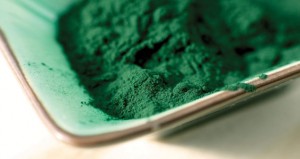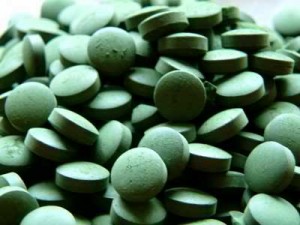 Spirulina is probably the most notable in the list of superfoods. It is not only super; it is also associated with magic and miracle.
Spirulina is probably the most notable in the list of superfoods. It is not only super; it is also associated with magic and miracle.
This type of blue green algae is interesting as it is not considered a plant or an animal. Biologists may have classified is as an algae, but incessant studies are conducted to determine to which kingdom it belongs to. Spirulina’s cell structure and metabolic functions are not quite like plants, but it lacks several features for it to be categorized as an animal.
In essence, the blue green alga is a one-celled organism. It was discovered as a food source in 9th century when the algae were harvested and sold in a cake form. The dried flat cakes were then called “dihe” and eaten by the locals in Europe as a staple part of their meals.
At present, the spirulina was found to be an effective cure for many illnesses. Some even claim that the alga is the most viable solution to world hunger. After all, it can be easily cultured and produced as it can withstand extreme weather conditions and rapid changes in temperature.
Cure for the “Incurable”
 From the studies done by Taiwan’d Department of Aquaculture, spirulina was found to have notable immune-boosting properties. The experiment was conducted by exposing white shrimps to mizture of seawater and spirulina extract. They were later transferred to 6.8 levelled pH of seawater.
From the studies done by Taiwan’d Department of Aquaculture, spirulina was found to have notable immune-boosting properties. The experiment was conducted by exposing white shrimps to mizture of seawater and spirulina extract. They were later transferred to 6.8 levelled pH of seawater.
The shrimps displayed a faster recovery process compared to the other shrimps who were not exposed to the extracts from the algae.
This led to the application of the algae in curing Crohn’s disease along with Lupus or fibromyalgia, chronic fatigue syndrome and chronic candida yeast. And with the world clamouring for cure to HIV and AIDS, spirulina may just provide answers. Extracts from the algae show promising properties in making immunodeficiency virus benign.
Keeping High Blood Pressure at Bay
Millions of Americans are diagnosed with hypertension each year. It was also named to be the leading cause of death among men and women. High blood pressure can translate to higher susceptibility to heart diseases and stroke.
Taking 4.5 grams of spirulina each day was proven to be effective in lowering blood pressure as shown by the study conducted by the Department of Biochemistry in Mexico. While it may be difficult for some countries to acquire the algae, health stores can have supplements mostly in tablet form.
Safely Normalizing Cholesterol Levels
Cholesterol may have long been demonized, but lessening its level inside the body abruptly can lead to serious health conditions. Taking cholesterol medications may seem to be the most viable way out but it there are several side effects springing from the drugs. These would include anemia, sexual dysfunction, immune depression, damages in the pancreas or liver, acidosis, cataract and susceptibility to cancer.
Taking eight grams of spirulina (even in tablet dosages) for 16 consecutive weeks are highly recommended for patients between 60 and 87. Younger individuals with cholesterol problems can eat spirulina with their meals with lesser amount, or depending on what the physician recommends.